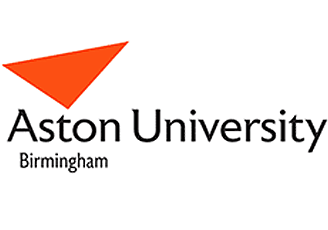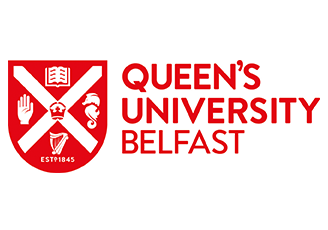Previous ERC research has found that small proportions of UK firms generate revenue growth faster than jobs growth, enhance productive efficiency and demonstrate greater resilience. This follow-up project explores in greater detail the characteristics of these ‘Growth Heroes’ and examines their wider impact in the local economy.
Micro-econometric analysis is based on linked data on the ERC’s ‘Millennial 2000’ firms with the ONS Business Structure Database, as well as regional data to help determine their contribution to the local economy.
The project will provide a better understanding of the channels through which ‘Growth Heroes’ impact locally (e.g. through local demonstration and exemplar effects, as well as potential competition and crowding out) and what types of ‘Growth Heroes’ (e.g., knowledge-based fast growing firms) generate positive effects on a region with particular characteristics (e.g., entrepreneurial regions; agglomeration regions etc.).
Stakeholder meeting
An initial stakeholder meeting was held to discuss this project on 16th May 2016. A brief presentation from Mark Hart provided an overview of the background to the project and introduced the ‘growth heroes’ – small companies which have growth both their employment and productivity and make a disproportionate contribution to national productivity growth. Following the presentation there was some discussion of data sources and issues around the use of turnover per employee as an indicator of productivity. The transitory nature of ‘growth hero’ status was also discussed and how this might influence the mechanisms through which having such companies locally influenced other firms. Potential implications for local policy were discussed as well as the link between ‘growth hero’ status and other firm characteristics such as innovation and exporting.
Mid Project Seminar – September 15th 2016
A mid-project meeting was held for Project “Growth Heroes and the Wider Impact” on 15 September 2016.
Jun Du provided a report on the progress and preliminary findings of the project that have been carried out by the team ( Karen Bonner and Enrico Vanino). The first stage of the project focuses on the definitions of fast growth firms. It is the the first time to statistically document and compare the presence, the economic contribution and characteristics of the fast growing firms that are well known affluent job creators and yet can be defined differently. This exercise highlights the implications on economic policy when adopting different definitions. The second stage of the project investigates the wider impact of fast growing firms in the UK, stepping out from existing understanding of the job creation power, to more broad impacts on the economy through mechanisms of market creation and productivity improvements, both within an industry and along the production chain.
The discussion was lively and informative with useful and constructive feedback received both during the session and after the workshop. It was agreed that a short report or research highlight paper would be useful to summarise the findings of the first stage work. This would also allow clarifications of the exact definitions of the fast growing firms and the role of single employee firms. A refined grouping for smaller firms (with less than 10 employees) and larger ones will be considered when comparing the fast growing firms, due to their intrinsic differences in characteristics. Correlation analysis would also be useful.
For the analysis of the wider impact of fast growing firms, further work will continue taking on board suggestions raised at this meeting. The model specification and estimation approaches will be further refined and experimented. Different channels of the effects will be further explored. There was a discussion on the analysis for specific sectors. The team will take this into consideration by separately estimate sectors with different levels of technology in the manufacturing sectors, and for business service sectors separately from other service sectors. More results and written outputs can be presented in the next stakeholder meeting.
Project Seminar – December 2016
The ERC held a project day on 13th December 2016 at the WBS offices in The Shard. The day was split into two sessions. In the morning we discussed the findings relating to the projects we have coming to a close in our current core research programme. The event was attended by over 40 stakeholders, and generated interesting discussion and useful feedback to help inform the research.
Jun Du reviewed the project objectives and made a detailed report on the findings in a presentation entitled “Growth heroes and their wider economic impact”.
The first part of project, focusing on definitions of fast growth firms, aims to understand the differences in these definitions and their policy implications. Based on the ONS Business Structure Database (BSD) 1997-2013, the evidence suggests that employment-based high growth firms generate lots of jobs but have mixed productivity records, while productivity-based high growth firms have mediocre job creation records but show productivity superiority. It is therefore important to note that the definition matters. Given different groups of firms are identified in the business population, the same policies applied may likely exert different effects and result in different economic outcomes. For the purpose of this project, this leads to the adoption of the both fast growth firm definitions (productivity-based Super growth hero, and employment-based OCED HGFs) in the following analysis.
The second stage of the project investigates the wider impact of fast growing firms in the UK. Drawing on the linked longitude data of ONS BSD, regional and industrial aggregate data from several sources spanning the period of 1997-2013, we empirically model regional-industrial spillover effects of fast growth firms in manufacturing and professional service sectors.
For the first time we provide evidence to highlight that beyond job creation and productivity improvement within their own organizations, high growth firms have externalities to other firms in the region, within industrial sectors and along the supply chains. We identify strong negative employment growth externalities within the same industrial sectors due to fast employment growth firms, indicating possible competition-led crowding out effects for skills and labour. There is consistent evidence of positive productivity spillovers within the same industrial sectors and across the sectors of production chains, indicating knowledge spillovers and competition-led efficiency improvement induced by fast productivity growth firms. The positive externalities may also be signs of reallocation of inputs to more productive (and likely more innovative) firms within sectors.
A map of regional disparity emerges in the distribution of fast growth firms and their wider economic impact. Interestingly, the areas of more high growth incidences are not necessarily those which benefit most from it. Further investigation is needed to help understand the mechanisms through which the benefits or adverse effects of fast growth phenomenon.
Finally, our spatial analysis corroborates the previous findings on the industrial horizontal externalities, highlighting a negative effect on the employment growth of surrounding firms, while the analysis of the one-to-one distance shows that the closest located fast growing firm have a strongly positive spillover effect both in terms of employment and productivity growth on the surrounding non-fast growing firms.
| Completion | November 2016 |
| Keywords | Productivity, growth, SME, growth hero, Millennial 2000, local growth |
| Theme | Business Demography |
| Project Lead | Jun du |
We are always happy to receive feedback from stakeholders on our research. If you would like to submit a comment, or you would like to be involved in future ERC research events, please email Dr Vicki Belt, Deputy Director – impact and Engagement.








